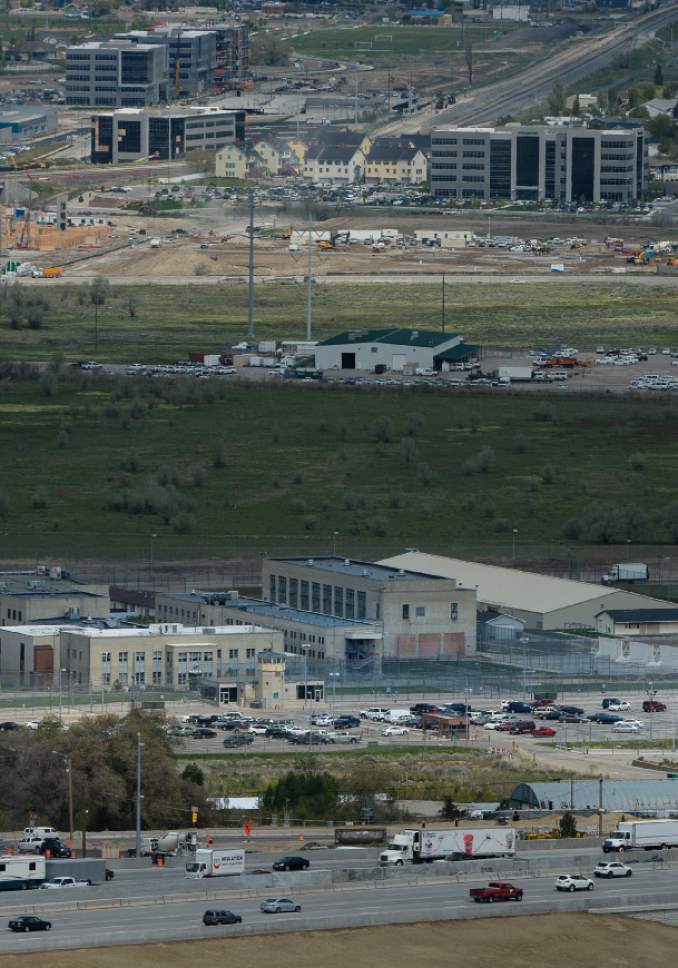This is an archived article that was published on sltrib.com in 2016, and information in the article may be outdated. It is provided only for personal research purposes and may not be reprinted.
After reviewing multiple sites west of Salt Lake City International Airport, state construction managers in charge of building a new prison have narrowed their focus to about 600 acres closest to the Great Salt Lake.
Also, initial reports show dust blown from the dry lake bed doesn't appear to be toxic, a potential killer for this complicated project.
Still, the decision to focus on what the state calls the "west parcel" concerns environmentalists who fear the project will harm the lake and migratory birds who rely on that area. They preferred a site more central in the city's undeveloped Northwest Quadrant, a placement the state has rejected.
Salt Lake City Mayor Jackie Biskupski doesn't want the prison to move from Draper to the capital, but if it is going to, she thinks this remote land is the right spot.
"This is the best of the available options for the city because it moves it farthest away [from residents] and allows the greatest amount of potential economic development," said city spokesman Matthew Rojas.
With a 4,000-bed prison complex come roads and utilities that could service an industrial park. At least that's what city leaders and state lawmakers are envisioning.
But before that can happen, Rojas said the state needs to conduct a thorough environmental review. That process is already underway.
When the Legislature and Gov. Gary Herbert decided to move the prison in the fall, they identified two sites west of the airport, and since have launched studies of the soils, cultural artifacts and air quality.
The site rejected by the Division of Facilities Construction and Management is owned by Rio Tinto, parent company of the Kennecott Copper Mine, and it is just north of an old landfill. The state worried that building there could destabilize the landfill, creating an environmental problem that would be costly to remediate.
"It is an older landfill," said Marilee Richins, the interim deputy director of the state Department of Administrative Services, who on Friday announced the decision to reject this site. "It is the unknown of what potential issues we might run into there when we disrupt dirt."
But it also was the site preferred by Friends of Great Salt Lake, who wanted to keep the prison farther away from a migratory bird sanctuary and sensitive wetlands. Now the state is focused on land owned by descendants of the Gillmor family.
"Really? This one?" said Lynn de Freitas, executive director of Friends of Great Salt Lake. "The west parcel is the most environmentally sensitive."
She was surprised to learn of the decision and wants more technical data to understand why the site near the landfill was rejected. De Freitas has praised the state for including environmental groups in a stakeholder committee, but she said Friday that her group was blindsided by the decision. She wants to see the technical data involving the now-rejected eastern site.
"There are environmental concerns with both sites," said Richins. "As you would expect in that complicated of an area."
She said the state is continuing to study the land and hopes to purchase a specific parcel later this year. Those negotiations are underway now. The state also is waiting for the final results of an air-quality study focused on the dust blown off of the dried lake bed, which could contain heavy metals and other toxins.
Richins said the initial reports from that study are "favorable."
"We are really not seeing anything in preliminary reports that cause us any greater concern than we would have in any other areas of the valley," she said.
Once the land is purchased and the architectural plans are complete, construction is expected to last four years. If the current timeline holds, the prison would start housing inmates in 2020.
Twitter: @mattcanham





